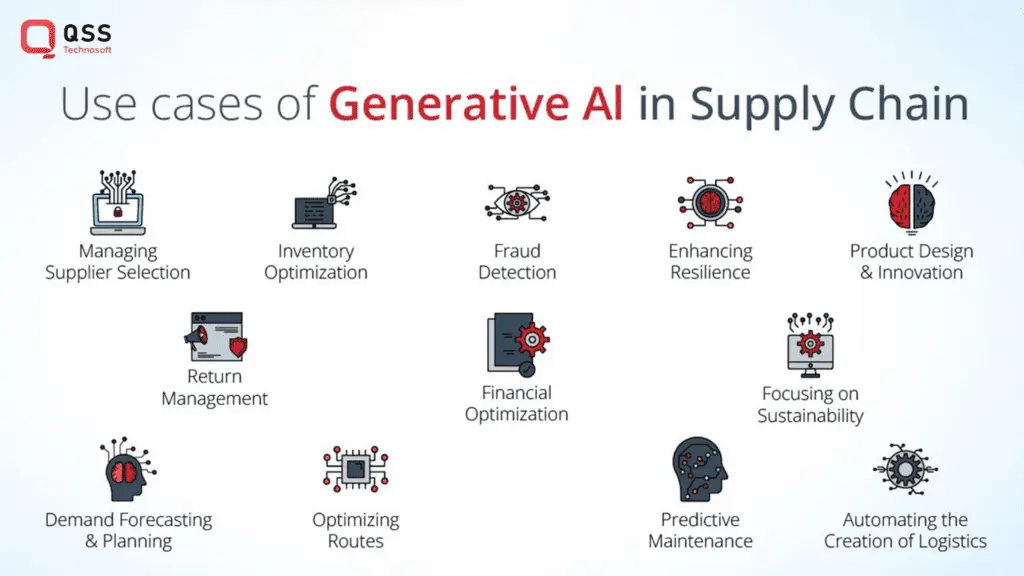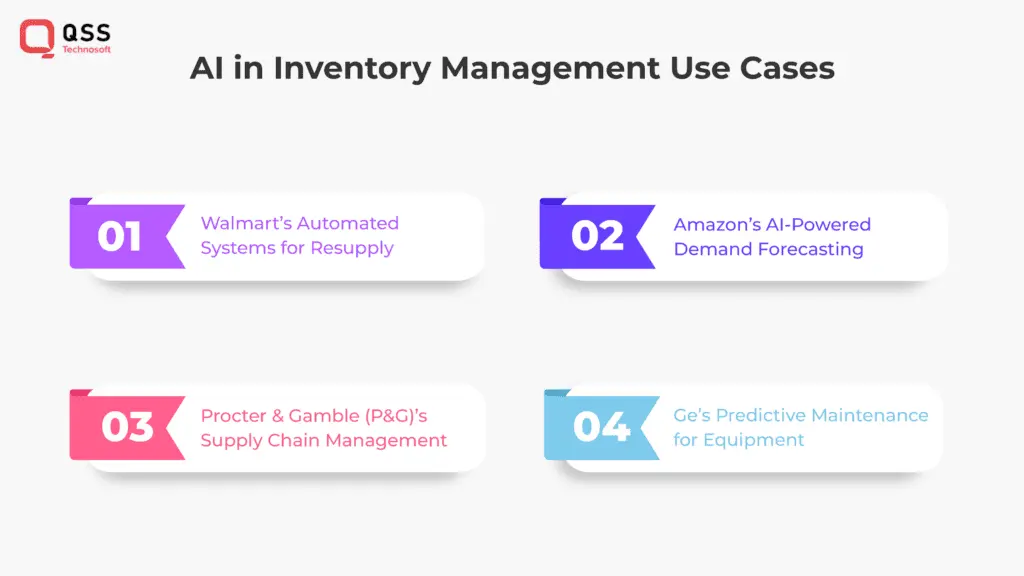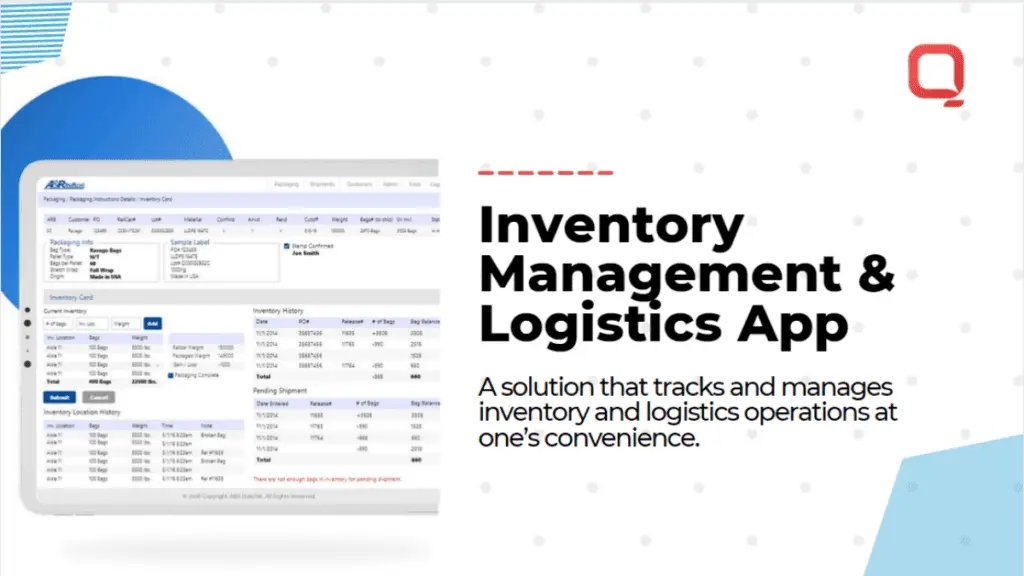Have you ever ordered something online only to be frustrated by delayed delivery, poor communication, and stockouts? Well, you’re not alone. Supply chain operations can be challenging for businesses of all sizes, from managing inventory and forecasting demand to optimizing transportation and delivery routes. But what if we told you that there’s a technology that can revolutionize supply chain management as we know it? Enter generative AI – a form of artificial intelligence that uses machine learning algorithms to analyze large datasets and generate new insights for businesses.

Read Our Old Blog : Exploring the Impact of Generative AI in Design and Content Creation
According to a recent study, companies that have implemented generative AI in their supply chain operations have witnessed an average reduction of 20% in forecast error rates and a mind-boggling 30% improvement in operational efficiency.
Generative AI is starting to transform the supply chain industry. By using real-time data, businesses can optimize their operations and streamline the entire delivery process. From forecasting demand to managing inventory, generative AI is helping businesses overcome the challenges that were once a significant barrier to growth.
So, whether you’re a small business owner or a logistics manager at a large corporation, generative AI can help you optimize your supply chain operations. In this blog, we will explore the benefits of generative AI and how it’s transforming the supply chain industry.
Understanding Generative AI in Supply Chain:
Generative AI is a branch of artificial intelligence that involves creating new data and information based on patterns and existing data. It uses machine learning algorithms to generate new solutions and optimize existing processes. In the context of supply chain operations, generative AI can analyze large datasets from various sources, such as sales data, production data, and market trends, and generate insights to improve decision-making and streamline operations.
The best part? Generative AI makes complex supply chain analytics accessible to anyone, regardless of their technical abilities. With user-friendly interfaces and simplified dashboards, businesses can make data-driven decisions in real-time without being overwhelmed by the sheer volume of information.
Benefits of Generative AI in Supply Chain:

Read Our Old Blog : Create Your Ultimate AI Toolbox for Interior Design and Architecture
- Demand Forecasting: Generative AI can analyze historical sales data, market trends, and other relevant variables to accurately forecast demand. This enables businesses to optimize inventory levels, minimize stockouts, and reduce excess inventory.
For example, a retail chain can use generative AI algorithms to analyze past sales data, taking into account factors like weather, holidays, and promotions. Based on this analysis, the system can generate accurate demand forecasts, allowing the company to optimize its inventory levels at each store.
- Inventory Optimization: Generative AI can minimize the risk of stockouts or excess inventory by optimizing inventory levels in real-time. It can take into account various factors such as demand patterns, lead times, production capacities, and supplier performance to determine optimal stock levels.
For instance, a manufacturing company can use generative AI to analyze demand forecasts, production capacities, and supplier performance data. The system can then generate optimal reorder points and quantities, ensuring that inventory levels are always optimized.
- Route Optimization: Generative AI algorithms can optimize delivery routes by considering factors such as traffic patterns, delivery time windows, and vehicle capacities. This helps businesses reduce transportation costs, improve customer satisfaction, and minimize delivery delays.
For example, a logistics company can use generative AI to analyze historical delivery data, traffic patterns, and real-time traffic information. Based on this analysis, the system can generate optimized routes, taking into account various constraints and preferences.
- Supplier Performance Monitoring: Generative AI can analyze supplier data, including quality metrics, delivery performance, and pricing patterns, to identify and monitor high-performing suppliers. This enables businesses to make data-driven decisions when selecting suppliers and ensures a smooth supply chain flow.
For instance, a global retailer can use generative AI algorithms to analyze supplier performance data, including delivery times, quality metrics, and pricing patterns. Based on this analysis, the system can generate supplier performance scores, allowing the company to identify and engage with the best suppliers.
- Risk Management: Generative AI can analyze various sources of data, such as news feeds, weather forecasts, and social media, to identify potential risks and disruptions in the supply chain. By generating real-time alerts and insights, businesses can proactively mitigate risks and minimize the impact of disruptions.
For example, a food and beverage company can use generative AI algorithms to analyze weather forecasts and news feeds for potential disruptions, such as hurricanes or labor strikes. Based on this analysis, the system can generate proactive alerts and recommendations, allowing the company to take preventive measures.
- Quality Control: Generative AI can analyze sensor data, manufacturing process data, and quality control records to detect anomalies and optimize product quality. By generating real-time insights, businesses can ensure consistent product quality and reduce the risk of defects or recalls.
For instance, an electronics manufacturer can use generative AI algorithms to analyze sensor data from the production line. Based on this analysis, the system can generate alerts for potential quality issues, allowing the company to take corrective actions before products reach the market.
- Cost Optimization: Generative AI can analyze cost data from various sources, such as production costs, transportation costs, and supplier pricing, to identify cost-saving opportunities. By generating insights and recommendations, businesses can optimize costs and improve profitability.
For example, a global e-commerce company can use generative AI algorithms to analyze production costs, transportation costs, and supplier pricing data. Based on this analysis, the system can generate cost-saving recommendations, allowing the company to optimize its operations.
- Real-time Decision Support: Generative AI can generate real-time insights, recommendations, and simulations to support decision-making in supply chain operations. This enables businesses to make informed decisions, adapt to changing market conditions, and maximize operational efficiency.
For instance, a consumer goods company can use generative AI algorithms to generate real-time insights on sales trends, inventory levels, and production capacities. Based on this information, the system can generate recommendations for optimizing production schedules, ensuring on-time delivery, and meeting customer demand.
Real-life Use Cases:
Several companies across various industries have successfully leveraged generative AI in their supply chain operations. Here are a few notable examples:
1. Walmart: Walmart uses generative AI algorithms to optimize its replenishment system. By analyzing sales data, weather forecasts, and other variables, the system generates accurate demand forecasts and optimizes the replenishment process, reducing stockouts and minimizing excess inventory.
2. Amazon: Amazon uses generative AI to optimize its delivery routes. By analyzing real-time traffic information, customer location data, and other variables, the system generates optimized delivery routes, reducing transportation costs and improving customer satisfaction.
3. Procter & Gamble: Procter & Gamble uses generative AI to optimize its production planning process. By analyzing demand forecasts, production capacities, and other variables, the system generates optimal production schedules, ensuring on-time delivery and reducing inventory holding costs.

Challenges and Implementation Strategies:
Adopting generative AI in supply chain operations comes with its own set of challenges. Some of the challenges include data quality, data integration, algorithm selection, and change management.
However, businesses can overcome these challenges by following certain implementation strategies:
Data Quality and Integration: Ensure data accuracy, completeness, and consistency across different systems and sources. Implement data governance processes and data integration frameworks to ensure seamless data flow.
Algorithm Selection: Choose the right set of generative AI algorithms based on the specific supply chain challenges and objectives. Consider factors such as algorithm complexity, scalability, interpretability, and ease of integration with existing systems.
Change Management: Educate and train employees on the benefits and capabilities of generative AI. Foster a culture of data-driven decision-making and encourage collaboration between data scientists, supply chain professionals, and IT teams.
Continuous Improvement: Monitor and evaluate the performance of generative AI algorithms in real-world scenarios. Continuously refine and enhance the algorithms based on feedback and new data.
Generative AI Real-world Applications:
Generative AI is being applied in various supply chain management functions across multiple industries. Here are a few real-world examples:
1. Transportation and Logistics: Generative AI is used to optimize delivery routes, vehicle scheduling, and load planning. It helps businesses reduce transportation costs, improve delivery efficiency, and minimize environmental impact.
2. Smart Warehousing: AI is used to optimize warehouse layouts, inventory placement, and picking routes. It enables businesses to improve operational efficiency, reduce labor costs, and enhance order fulfillment accuracy.
3. Demand Planning and Forecasting: Generative AI is used to analyze historical sales data, market trends, and other variables to generate accurate demand forecasts. This helps businesses optimize inventory levels, minimize stockouts, and reduce excess inventory.
4. Supplier Management: Generative AI is used to analyze supplier data and performance metrics to identify and monitor high-performing suppliers. This enables businesses to make data-driven decisions when selecting suppliers and ensures a smooth supply chain flow.
Future Outlook:
The future of generative AI in supply chain operations is promising. With advancements in machine learning algorithms, data analytics, and computing power, businesses can expect further improvements in automation, accuracy, and optimization.
According to a study by McKinsey & Company, businesses that effectively implement AI in their supply chain and operations can experience up to 20% reduction in procurement costs and a 50% reduction in supply chain costs.
- McKinsey & Company Study on AI’s impact on supply chain costs.
In a survey conducted by Deloitte, 79% of executives agreed that AI will significantly impact their companies’ supply chain functions, and 85% believed that it will result in competitive advantages.
- Deloitte’s survey on AI’s role in supply chain functions.
Generative AI will continue to play a critical role in predicting customer demand, optimizing inventory, and improving delivery efficiency. It will also facilitate better risk management, quality control, and cost optimization
Case Study: Inventory Management and Logistics App
This case study showcases a project developed by QSS Technosoft, which focuses on tracking and managing inventory and logistics operations efficiently. The app incorporates unique identifiers to monitor inventory items, automates re-ordering processes, and provides detailed analysis and reporting to warehouses.

Problem Identification:
In the present global logistics scenario, managing inventory and logistics across multiple locations poses several challenges. To address this, QSS Technosoft aimed to develop an app that simplifies and streamlines the tracking and management of inventory and logistics.
Feasibility Study:
Through a thorough examination of the problems associated with inventory management and logistics, QSS Technosoft identified key tasks that users should be able to perform effortlessly. These tasks included implementing a responsive web application, optimizing the packaging system, and tracking the entry and exit of rail cars from warehouses.
Solution Implementation:
To ensure the success of the project, QSS Technosoft conducted user research to understand the users’ requirements and vision for the solution.
- This included organizing a product discovery workshop to discuss the final concept and gather insights from the clients.
- Additionally, a competitor analysis was performed to make the solution more user-friendly and attract a larger audience.
Challenges Faced:
During the development process, QSS Technosoft encountered several challenges, including providing a comprehensive user experience with a simplified interface, enabling multi-user activity, dividing items into different groups for simultaneous stock management, integrating barcode scanning support, and delivering detailed analysis and reporting functionalities to warehouses.
Final Outcome:
QSS Technosoft successfully developed a native hybrid mobile application that addressed the challenges faced. The app enhanced work efficiency, seamlessly integrated backend processes with a user-friendly UI/UX, automated workflows, ensured high data accuracy, and provided alerts and validations for accurate data entry. Unique identifiers were used to classify each inventory item.
To learn more about this case study and the technologies used, you can visit the QSS Technosoft Portfolio.
WHY QSS Technosoft?
QSS’s Expertise in Building Generative AI Solutions for Supply Chain:
QSS Technosoft is a leading technology company specializing in developing generative AI solutions for supply chains. With expertise in transportation, logistics, inventory management, and analytics, QSS has helped numerous businesses transform their supply chain operations.
By using cutting-edge machine learning algorithms, QSS has developed advanced solutions for demand forecasting, inventory optimization, route optimization, supplier management, and risk management. These solutions have enabled businesses to achieve significant cost savings, operational efficiency, and customer satisfaction.
Conclusion:
Generative AI is changing the game in supply chain operations by using smart technology to help businesses make better decisions. It can analyze data, optimize processes, and save money, all while making customers happier.
With generative AI, businesses can forecast what customers will want, figure out how much inventory to keep, and make sure deliveries arrive on time. It’s like having a magic ball that tells you exactly what to do. Why keep using old-fashioned methods when you can upgrade to generative AI?
It’s time to join the smart people who are already using generative AI in their supply chains. QSS Technosoft can help make the transition easy and show you how other companies have succeeded with this technology. Don’t get left behind – start with generative AI and watch your supply chain thrive.
We are proud to mention that our work has been recognized by leading B2B reviews and research platforms like GoodFirms, Clutch, MirrorView, and many more.


How Generative AI is Revolutionizing Supply Chain Operations